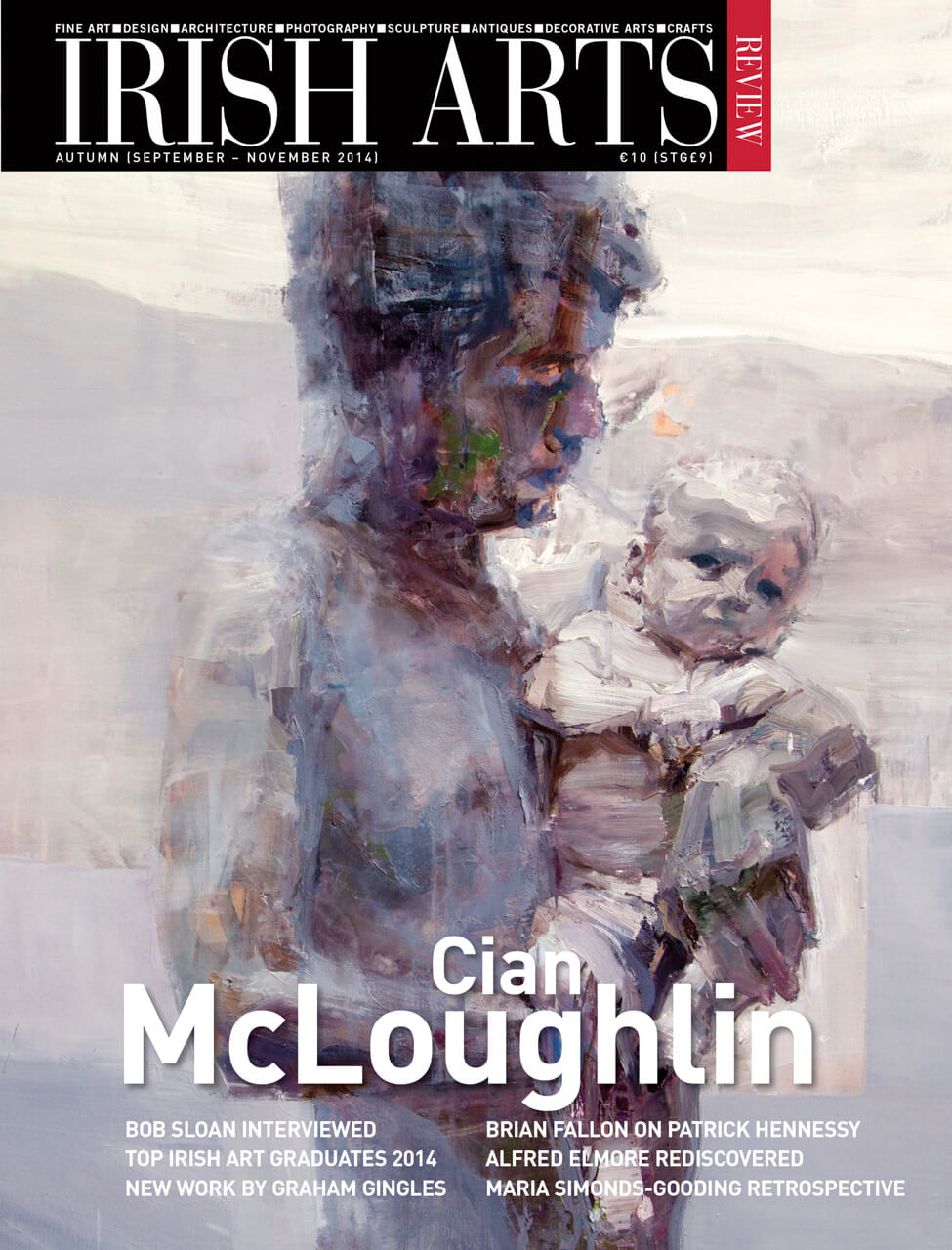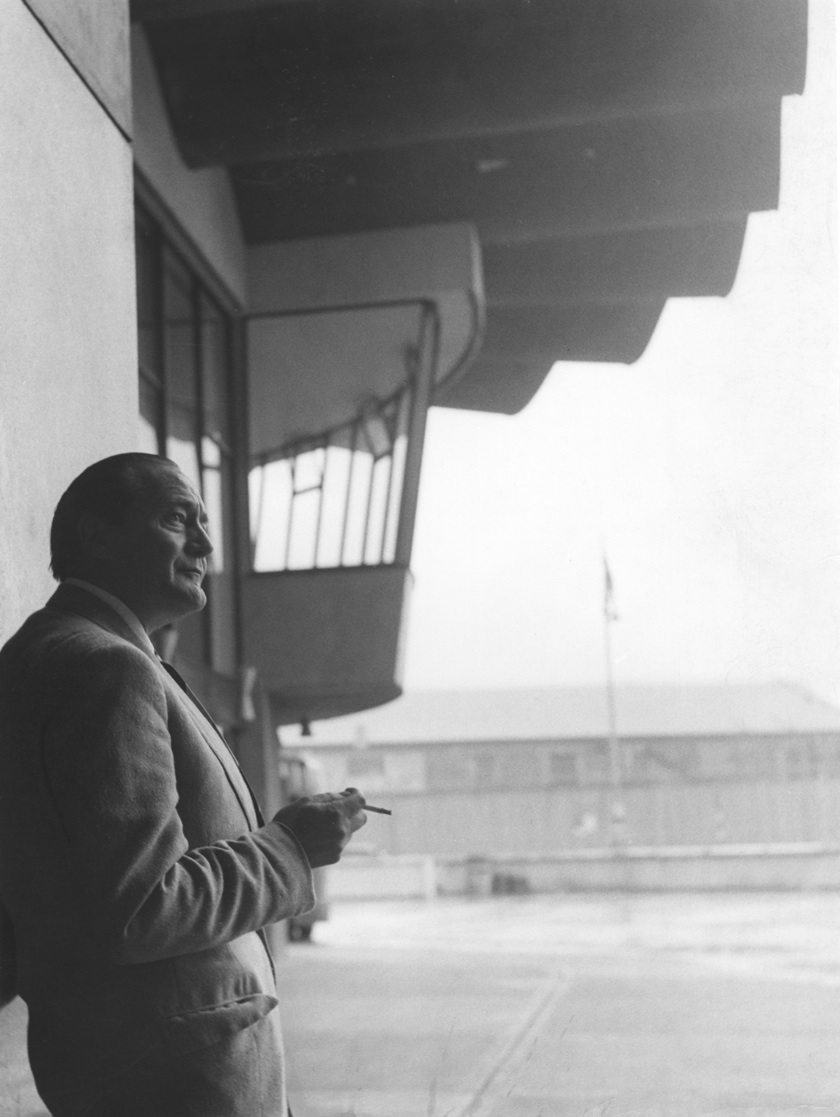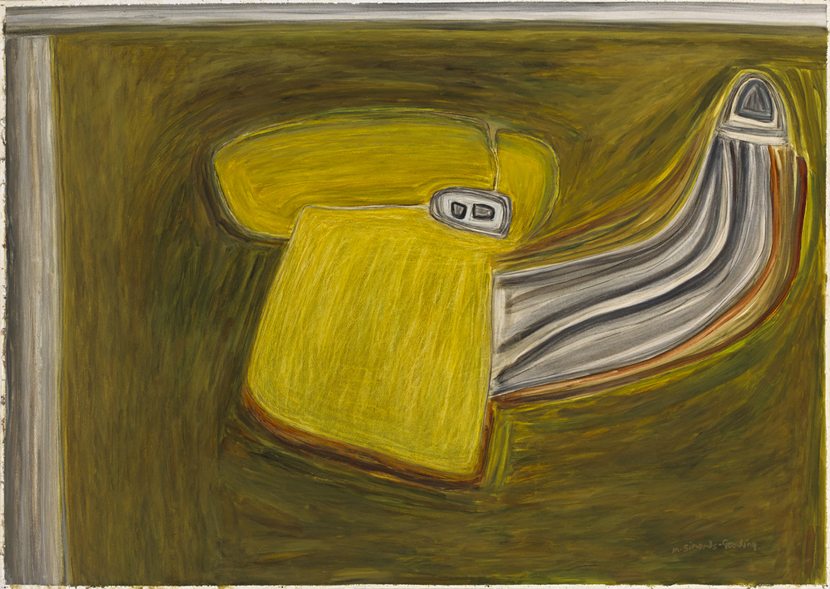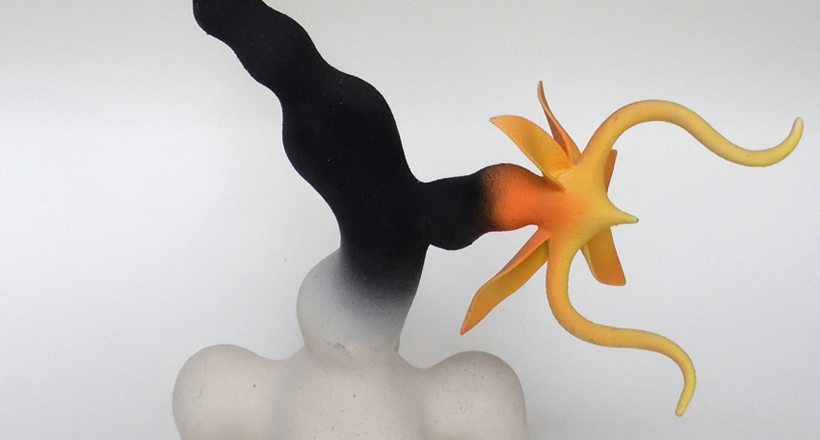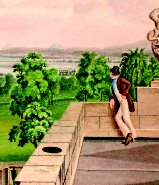
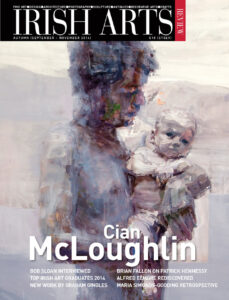
Lord Charlemont’s Casino provides an ideal setting for a landscape exhibition prompting Ruth Musielak to examine some favoured historical views of the vicinity
Inspired by the panorama of Dublin Bay, Ireland’s landscape artists have sought to capture its coastal beauty. Favoured viewpoints were set back from the Clontarf shoreline; looking towards Wicklow or from elevated spots in Blackrock or Stillorgan, looking toward the Hill of Howth.
In the last decade of the 18th century, William Ashford (1746-1824), produced several notable oil paintings of Dublin Bay. Possibly he was inspired to paint the landscape seen on his journeys around rural Ireland as an employee of the Irish Ordnance Survey. During his travels he would have come in contact with many former students of the Dublin Drawing Schools, who were engaged by the Ordnance Survey to record antiquities.
The very recognizable outline of the Clontarf Charter School, built in 1748, provided a useful landmark seen in views by several painters.2 Its fa√ßade, pediment and dome appear in three-quarter frontal view seen from the coastal North Strand Road in Ashford’s Royal Charter School, Clontarf, County Dublin (Fig 4). The Wicklow Hills are distantly seen beyond the wind-whipped sea, painted at high tide. In another of his paintings, View of Dublin from Clontarf, the domed outline of the Charter School may be seen from the rear (Fig 1). Despite the title of the latter, his viewpoint appears to have been from the southern side of the Malahide Road, on the opposite side of which stood Charlemont’s demesne, rather than from Clontarf itself, which lies closer to the shore. John Rocque’s map of County Dublin (1760) indicates a feature named as the ‘Black Quarry’ on land now occupied by the Clontarf Golf Club, which lay between the Malahide Road (then known as Donnycarney Lane) and the Howth Road (then named Black Quarry Lane). The detail of Ashford’s painting is such that small groups of sheep, cows and goats may be discerned, cropping on the grassy mounds left at the southern end of the quarry. Several men with horses or donkeys are visible, perhaps gleaning building material obtained from this disused area.
Some paintings and drawings were enhanced by an elevated viewpoint. Those depicting the familiar outline of the Wicklow Hills, with Killiney Hill usually seen topped by its landmark obelisk, provide easy identification of the situation from which each painter worked. The celebrated Mary Delany (1700-1788), executed several views from Delville, her garden near Finglas, now occupied by the Bon Secours Hospital on Glasnevin Hill. These confirm that by virtue of her elevated viewpoint, despite her greater distance from the water, she shared a similar view across Dublin Bay as artists working from points further east. From Delville, Mrs Delany viewed a Dublin harbour which would be comparatively unchanged over the following seventy years. Mrs Delany’s drawing, A view of ‚Ķ Delville with ye country beyond it and the bay of Dublin’ (1744), foregrounds Delville’s serpentine garden wall and the intervening land stretching to the coastline of Fairview, while the recently erected obelisk may be faintly discerned on Killiney Hill, beyond a sail-crowded bay. At this time, Delany had recently returned from her extended honeymoon tour in England to be freshly enchanted by the small garden which Dean Patrick Delany had created in the years before their marriage. She proceeded to cram the diminutive demesne with further examples of picturesque ornaments similar to those she had seen on the estates of her landed friends and relatives in England.
The ‘Charlemont Album’, a family scrapbook of poems and images was compiled by Francis Caulfeild, 2nd Earl Charlemont, during the first half of the 19th century. The album appears to have been originally intended as a memorial to his father’s designed landscape but later developed into a kind of illustrated guest book, with verses added by the Earl himself and his visitors to Marino. Thomas Leeson Rowbotham (1782-1853), provided the album with a dozen drawings, of which three are panoramic pencil drawings of Dublin Bay and City. The first of these was inscribed, ‘taken from the top of the temple at Marino’, and are dated 1816. (Fig 6). As a noted marine painter, it is not surprising that the view from the Casino roof, with mountains encompassing a fine harbour studded with sailing ships, appealed to his sensibilities. Six images from this album are on view in the exhibition, ‘Paradise Lost: Lord Charlemont’s Garden at Marino’, which has been designed to draw attention to the landscape setting of the f√™ted monument. Rowbotham’s tripartite panorama bridges the improvements of the previous hundred years: In his first, most easterly view, little has changed since the 17th century beyond the development of warehouses and port buildings along the Great South Wall. A straggle of houses, similar to those seen in Ashford’s painting, represents the developing resort of Clontarf, to the north of the Charter School (which would be closed down within fifteen years of this drawing). Any view of the Black Quarries is hidden by a group of trees planted around the entrance gates by the first Earl, possibly with the deliberate intention of screening this industrial concern. In the second, a sailing ship approaches the harbour, while the city itself sprawls toward the shore, backed by the Dublin mountains which rear to the south. Ancient castles and a Martello tower dot the coastline. The third allows a comparison between the rural demesne of Marino in the foreground with Dublin’s urban architecture, dominated by the twenty-year-old Four Courts building, although older technologies were still evident in suburban windmill and smoking brick kiln. An undated watercolour, View of Dublin Bay, by John Henry Campbell (1757-1828), was executed from the Marino demesne or its immediate vicinity (Fig 5). Campbell had studied at the Dublin Society’s School of Landscape and Ornament under the French drawing Master, James Mannin. Comparing his watercolour with Rowbotham’s drawings, it appears that his view was taken from the high ground at Marino, possibly at the Donnycarney side of the park. Beyond the lush foliage of the demesne, the Charter School cannot be seen and rather less of the water of Dublin Bay is depicted. The South Wall with its shipping cuts across the view, while the familiar outline of hills and mountains is almost identical to Rowbotham’s drawing.
Through the oils, watercolours and drawings discussed here, which date from the early 1790s to 1853, it has been possible to track the changes to the built environment of the city of Dublin
Two later watercolour paintings from precisely the same rooftop perspective as Rowbotham’s vistas are provided by a cleric and amateur artist Edward McFarland about whom little is known, beyond the evidence of his remarkable album, dated 1853, detailing the sights purportedly enjoyed on one afternoon’s carriage ride between Marino and Howth. Two of McFarland’s watercolours were painted from the roof of the Casino (Fig 3). These views over Dublin Bay illustrate the changes which had occurred over the thirty-seven years since Rowbotham occupied the same viewpoint. Ships still carrying sail now display smokestacks belching smoke and the Dublin to Drogheda train, running on track that ran barely beyond the southern bounds of the Marino demesne, was jauntily depicted in both views. The city’s southern suburban fringe is seen to have expanded further down the coast. Nevertheless, many recognizable features remained: maturing trees did not totally obscure the line of houses along the Howth Road, while an extended South Wall continued to divide Dublin Bay, and the Wicklow hills, somewhat casually depicted, close the distant view. Sheep, accompanied by a shepherd, graze peacefully on Marino’s sward, a scene which, according to surviving documents, might not have been much altered over the previous hundred years.
Views from the Casino at Marino have contributed much to this overview. Many images of the Casino itself include views of Dublin Bay in their background since this was the favoured aspect from which to depict the building. None shows the landscape to better advantage than an oil by Thomas Roberts (1748-1777), A Landscape with the Casino at Marino, c.1772, its ascribed title indicating Roberts’ intention to promote the attractions of the landscape (Fig 2). Whereas the painting is usually admired primarily for its representation of the Casino building, Roberts’ depiction of the designed landscape at Marino set against the magnificent natural features of its view, claim our equal attention. It is appropriate that a detail from this painting adorns the cover of the catalogue accompanying the exhibition. Through the oils, watercolours and drawings discussed here, which date from the early 1790s to 1853, it has been possible to track the changes to the built environment of the city of Dublin, and its immutable surroundings of water, hills and mountains, as seen from the northern side of Dublin Bay. Later land reclamation may have changed the outline of the bay at Fairview and Clontarf, but the many representations by 19th-century artists of those physical features which surround the city of Dublin allow us to orient ourselves in a way that transcends time.
Ruth Musielak was awarded a PhD in History of Art from UCD in 2013, a chapter from which formed the basis of the catalogue to ‘Charlemont’s Marino: Portrait of a Landscape’.
From the IAR Archive
First published in the Irish Arts Review Vol 31, No 3, 2014
